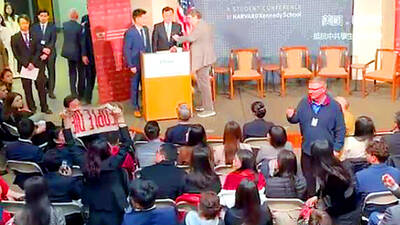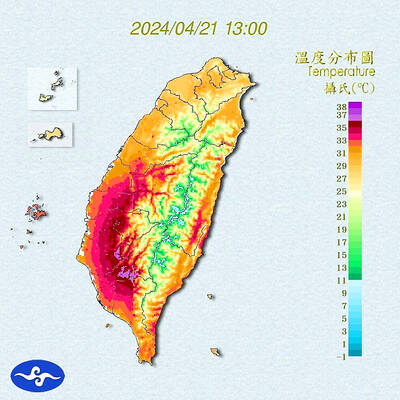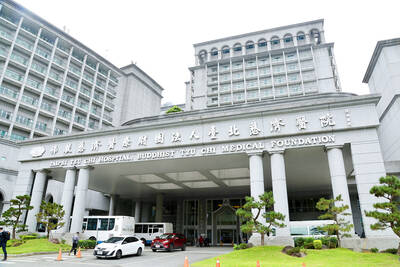Experts and Chinese Nationalist Party (KMT) lawmakers yesterday raised doubts about the government’s readiness to execute the Development of National Languages Act (國家語言發展法) and said that there was ambiguity in the act’s definition of so-called “national languages.”
The act, which was passed by the legislature on Dec. 25, 2018, and went into effect on Jan. 9, 2019, is to promote the passing down, revival and development of national languages in recognition of Taiwan’s multicultural nature.
In the act, “national languages” are defined as the natural languages used by ethnic groups in Taiwan, as well as Taiwan Sign Language.

Photo: Liu Hsin-de, Taipei Times
The act stipulates that starting with the 2022-2023 school year, classes in national languages are to be mandatory “at all stages of compulsory education.”
Based on the Ministry of Education’s 12-Year Basic Education Curriculum Guidelines, which were implemented in August 2019, elementary-school students are already required to take a weekly class in either a bentu (本土, “local” or “native”) language — specifically Hoklo (also known as Taiwanese), Hakka or an Aboriginal language — or a “new immigrant language” (Indonesian, Vietnamese, Thai, Malay, Filipino, Cambodian or Burmese).
Elementary schools are already facing a shortage of teachers of bentu and “new immigrant” languages, National Policy Foundation member Kao Yuang-kuang (高永光) told a news conference in Taipei held by the foundation — a think tank affiliated with the KMT.
He asked whether enough teachers would be available to teach “national languages” at junior and senior-high schools when they become mandatory next year.
KMT Legislator Cheng Cheng-chien (鄭正鈐) said that the ministry has yet to come up with a solution to the shortage of teachers.
The lack of teachers is the “biggest problem” with making “national language” classes mandatory for junior and senior-high school students, Cheng said.
The definition of “national languages” in the act is wide-ranging, he said, adding that it is important to clarify which languages are to be options.
Chinese Language Education Promotion Association secretary-general Tuan Hsin-yi (段心儀) also asked what constituted a “national language,” calling the act’s definition “vague.”
The “unclear” definition in the act is likely to lead to unequal treatment of languages, foundation member Ho Chan-hsu (何展旭) said.
In theory, languages such as Dutch, Spanish, Japanese and Cantonese could also be considered “national languages,” Ho said.
KMT Legislator Lee De-wei (李德維) urged the ministry to focus on what would be meaningful for students when it plans and designs classes.
Education should not be treated like a “showpiece,” Lee said.
Additional reporting by CNA

A group of Taiwanese-American and Tibetan-American students at Harvard University on Saturday disrupted Chinese Ambassador to the US Xie Feng’s (謝鋒) speech at the school, accusing him of being responsible for numerous human rights violations. Four students — two Taiwanese Americans and two from Tibet — held up banners inside a conference hall where Xie was delivering a speech at the opening ceremony of the Harvard Kennedy School China Conference 2024. In a video clip provided by the Coalition of Students Resisting the CCP (Chinese Communist Party), Taiwanese-American Cosette Wu (吳亭樺) and Tibetan-American Tsering Yangchen are seen holding banners that together read:

UNAWARE: Many people sit for long hours every day and eat unhealthy foods, putting them at greater risk of developing one of the ‘three highs,’ an expert said More than 30 percent of adults aged 40 or older who underwent a government-funded health exam were unaware they had at least one of the “three highs” — high blood pressure, high blood lipids or high blood sugar, the Health Promotion Administration (HPA) said yesterday. Among adults aged 40 or older who said they did not have any of the “three highs” before taking the health exam, more than 30 percent were found to have at least one of them, Adult Preventive Health Examination Service data from 2022 showed. People with long-term medical conditions such as hypertension or diabetes usually do not

Heat advisories were in effect for nine administrative regions yesterday afternoon as warm southwesterly winds pushed temperatures above 38°C in parts of southern Taiwan, the Central Weather Administration (CWA) said. As of 3:30pm yesterday, Tainan’s Yujing District (玉井) had recorded the day’s highest temperature of 39.7°C, though the measurement will not be included in Taiwan’s official heat records since Yujing is an automatic rather than manually operated weather station, the CWA said. Highs recorded in other areas were 38.7°C in Kaohsiung’s Neimen District (內門), 38.2°C in Chiayi City and 38.1°C in Pingtung’s Sandimen Township (三地門), CWA data showed. The spell of scorching

POLICE INVESTIGATING: A man said he quit his job as a nurse at Taipei Tzu Chi Hospital as he had been ‘disgusted’ by the behavior of his colleagues A man yesterday morning wrote online that he had witnessed nurses taking photographs and touching anesthetized patients inappropriately in Taipei Tzu Chi Hospital’s operating theaters. The man surnamed Huang (黃) wrote on the Professional Technology Temple bulletin board that during his six-month stint as a nurse at the hospital, he had seen nurses taking pictures of patients, including of their private parts, after they were anesthetized. Some nurses had also touched patients inappropriately and children were among those photographed, he said. Huang said this “disgusted” him “so much” that “he felt the need to reveal these unethical acts in the operating theater